
Journal of Naval Architecture and Marine Engineering
Scope & Guideline
Charting the Course for Naval Excellence
Introduction
Aims and Scopes
- Fluid Dynamics and Heat Transfer:
The journal emphasizes the study of fluid mechanics, particularly in marine contexts. This includes the analysis of heat transfer in various fluid systems, including nanofluids and MHD (Magnetohydrodynamic) flows, which are essential for understanding thermal management in marine applications. - Numerical and Computational Methods:
A significant portion of the research published focuses on numerical simulations and computational fluid dynamics (CFD). These methodologies are crucial for predicting fluid behavior under various conditions, optimizing designs, and enhancing performance in marine engineering. - Innovative Ship Design and Performance Optimization:
The journal explores advancements in ship design, including the use of artificial intelligence and optimization techniques to enhance fuel efficiency, reduce emissions, and improve overall vessel performance. - Marine Renewable Energy:
Research on the integration of marine renewable energy solutions, such as the reuse of offshore platforms and energy conversion technologies, is a growing focus area, reflecting the industry's shift towards sustainability. - Structural Analysis and Integrity:
The journal includes studies on the structural integrity of marine vessels, focusing on stress-strain analysis, hull design, and the impact of various environmental factors on marine structures.
Trending and Emerging
- Nanofluids and Enhanced Heat Transfer:
Research on nanofluids has gained traction, focusing on their unique properties and applications in marine environments. This emerging theme is critical for improving thermal management systems in naval applications. - Sustainability and Green Technologies:
The journal is increasingly publishing studies related to sustainability in marine engineering, particularly in relation to reducing greenhouse gas emissions and improving fuel efficiency in ship design, aligning with global environmental goals. - Artificial Intelligence in Engineering Design:
The integration of artificial intelligence in the ship design process is becoming a prominent theme. This reflects a growing trend towards leveraging AI for optimizing design parameters and enhancing decision-making in marine engineering. - Complex Fluid Interactions and Modeling:
There is a rising interest in complex fluid interactions, including MHD flows and non-Newtonian fluids. Research in this area is crucial for advancing the understanding of fluid dynamics in the context of modern marine applications. - Marine Renewable Energy Solutions:
The exploration of marine renewable energy sources, including the retrofitting of existing structures for energy production, is emerging as a vital area of research, highlighting the industry's shift towards sustainable energy practices.
Declining or Waning
- Classical Fluid Dynamics:
The focus on traditional fluid dynamics topics has waned, with a noticeable shift towards more complex fluid interactions involving nanofluids and MHD effects. This indicates a preference for innovative studies that incorporate modern materials and methods. - Experimental Studies:
There has been a reduction in purely experimental studies, with a greater emphasis on computational models and simulations. Researchers appear to be favoring theoretical approaches that leverage advanced computational techniques over traditional experimental methods. - Marine Vehicle Design without Computational Input:
Research focusing solely on conventional marine vehicle design without incorporating computational optimization techniques has seen a decline. The industry is increasingly relying on computational tools to enhance design efficiency and performance, leading to fewer publications in this area.
Similar Journals
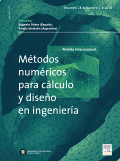
Revista Internacional de Metodos Numericos para Calculo y Diseno en Ingenieria
Elevating Engineering Design through Open Access ResearchRevista Internacional de Metodos Numericos para Calculo y Diseno en Ingenieria is a prominent academic journal dedicated to the dissemination of innovative research and methodologies in the fields of applied mathematics and engineering. Published by SCIPEDIA S L in Spain, this journal has been an essential resource for researchers since its inception in 1987, transitioning to an Open Access model in 2016 to enhance accessibility and foster collaboration among professionals and academics globally. Currently indexed in Scopus, it holds a Q4 category designation in both applied mathematics and miscellaneous engineering fields for 2023, reflecting its focus on advancing numerical methods to solve engineering problems. Despite ranking at the lower percentile, it serves as a vital platform for emerging scholars and practitioners aiming to contribute to cutting-edge developments in numerical techniques and engineering design. The journal's commitment to providing a forum for new ideas makes it an invaluable asset for students, researchers, and industry professionals seeking to stay abreast of advancements in the discipline.
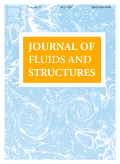
JOURNAL OF FLUIDS AND STRUCTURES
Exploring the Dynamics Between Fluids and StructuresJournal of Fluids and Structures, published by Academic Press Ltd - Elsevier Science Ltd, is a premier international journal dedicated to the interdisciplinary field of fluid-structure interactions. With an impressive impact factor and ranking in the Q1 category for Mechanical Engineering and a Scopus ranking of #119 out of 672, this journal serves as a vital resource for researchers, professionals, and students alike. Since its inception in 1987, it has consistently delivered cutting-edge research and comprehensive reviews that contribute significantly to the understanding of fluid dynamics and structural mechanics. The journal emphasizes innovative methodologies and advances in the analysis of complex interactions between fluids and structures, making it essential for those at the forefront of engineering and applied physics. Additionally, with converged years from 1987 to 2024, the journal has maintained a commitment to fostering academic discourse and presenting groundbreaking research that shapes the future of the field.
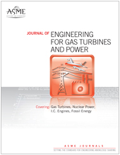
JOURNAL OF ENGINEERING FOR GAS TURBINES AND POWER-TRANSACTIONS OF THE ASME
Fueling Ideas for Sustainable Power SolutionsJournal of Engineering for Gas Turbines and Power - Transactions of the ASME, published by the esteemed American Society of Mechanical Engineers (ASME), is a leading interdisciplinary journal dedicated to advancing the fields of energy engineering, aerospace, nuclear energy, and mechanical engineering. With an impressive history dating back to 1960 and continuing its contributions through 2024, this journal boasts a Q2 ranking in multiple engineering categories, reflecting its strong impact on both academia and industry. Although not an open-access journal, it provides invaluable insights and research findings that cater to the needs of professionals, researchers, and students alike. The journal's ISSN is 0742-4795 with an E-ISSN of 1528-8919, ensuring widespread visibility in the global academic community. Indexed in Scopus, it ranks notably within its fields—21st in Nuclear Energy and Engineering and 51st in Aerospace Engineering—underscoring its relevance and contribution to critical technological advancements. Researchers in this domain will find the journal a vital resource for innovative studies, practical applications, and the latest developments related to gas turbines and power generation.
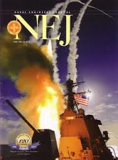
NAVAL ENGINEERS JOURNAL
Unveiling the latest breakthroughs in naval engineering.NAVAL ENGINEERS JOURNAL, published by the American Society of Naval Engineers, serves as a pivotal platform for the dissemination of research and advancements in naval engineering. With a rich publication history dating back to 1889, this journal offers vital insights into the principles, practices, and technologies that shape the naval engineering discipline. While it does not operate under an open access model, NAVAL ENGINEERS JOURNAL remains an essential resource for researchers, professionals, and students, facilitating a deeper understanding of marine engineering challenges and innovations. It encompasses a range of topics including, but not limited to, ship design, propulsion systems, and naval architecture, making it a critical resource for practitioners and scholars committed to advancing maritime technologies. For those interested in the most recent studies and discussions in the field, this journal serves as an authoritative reference, fostering collaboration and knowledge sharing among the naval engineering community.

Propulsion and Power Research
Fueling Knowledge in Propulsion and Power Technologies.Propulsion and Power Research, published by KEAI PUBLISHING LTD, is a leading Open Access journal that has been advancing the field of propulsion and power systems since its inception in 2012. With its commitment to fostering scientific discourse and innovation, the journal has gained a prominent position within academia, achieving a Q1 ranking in multiple categories such as Aerospace Engineering, Automotive Engineering, and Fluid Flow and Transfer Processes as of 2023. With an impressive ranking of #18 out of 153 in Aerospace Engineering and consistent recognition in the Scopus rankings, the journal explores critical advancements and research findings that propel the industry forward. As an Open Access publication, it ensures that groundbreaking research is readily available to a broad audience, enhancing collaboration between researchers, practitioners, and students. The journal's scope encompasses a wide range of topics within propulsion and energy solutions, making it an essential resource for anyone keen on discovering significant developments in this dynamic field.

JOURNAL OF ENHANCED HEAT TRANSFER
Elevating Standards in Mechanical Engineering and Fluid DynamicsThe JOURNAL OF ENHANCED HEAT TRANSFER, published by BEGELL HOUSE INC, is a prominent resource for researchers and professionals in the fields of mechanical engineering, fluid flow and transfer processes, and condensed matter physics. With a history spanning from 1993 to 2024, this journal offers a platform for disseminating cutting-edge research and innovations that enhance our understanding of heat transfer phenomena. Although it operates under a traditional subscription model, its impressive standing is underscored by its Scopus rankings—positioned within the 59th percentile for Mechanical Engineering and 58th percentile for Fluid Flow and Transfer Processes. Additionally, it holds Q2 and Q3 categorizations in relevant fields, reflecting its importance in advancing knowledge and applications in heat transfer technology. This journal effectively bridges the gap between theoretical insights and practical solutions, making it an indispensable tool for academics, industrial practitioners, and students eager to explore advancements in thermal management and efficiency.

Brodogradnja
Empowering Knowledge in Mechanical and Naval EngineeringBrodogradnja is a distinguished open-access journal dedicated to the fields of Mechanical Engineering and Naval Architecture, published by the University of Zagreb's Faculty of Mechanical Engineering & Naval Architecture. Since its launch, the journal has been at the forefront of disseminating valuable research and advancements in engineering design, marine technology, and shipbuilding practices, contributing significantly to both academic literature and industrial applications. With an impressive Q1 ranking in Mechanical Engineering and a Q2 ranking in Ocean Engineering for 2023, it stands as a pivotal resource for researchers, professionals, and students alike. Moreover, the journal's commitment to open access since 2005 ensures that cutting-edge research is accessible to a global audience, facilitating collaboration and knowledge-sharing among experts in the field. Based in Croatia, Brodogradnja continues to uphold the legacy of high-quality technical scholarship and innovation, making it an essential platform for advancing marine engineering and related disciplines.

Mechanika
Catalyzing Innovation in the Academic LandscapeMechanika is a prominent open-access journal published by Kaunas University of Technology in Lithuania, with an ISSN of 1392-1207 and E-ISSN 2029-6983. Since its transition to open access in 2007, the journal has successfully facilitated the dissemination of vital research findings within the field of condensed matter physics, carving a niche for itself in a competitive academic landscape. Despite currently being categorized in the Q4 quartile for its impact in this area, Mechanika aims to foster advancements by providing a platform for innovative studies, reviews, and applications. As researchers, professionals, and students engage with its content, they will find an array of studies that push the boundaries of understanding in mechanics and related disciplines. Situated in the vibrant academic milieu of Kaunas, Mechanika is committed to quality, accessibility, and fostering scientific dialogue among the global academic community.

International Journal of Heat and Technology
Transforming Knowledge into Practical SolutionsThe International Journal of Heat and Technology is a premier academic publication dedicated to the dissemination of innovative research in the fields of thermal engineering, fluid mechanics, and condensed matter physics. Published by the INT INFORMATION & ENGINEERING TECHNOLOGY ASSOCIATION and based in Italy, this journal has been a significant resource for researchers and professionals since its inception in 1983, with a commitment to advancing knowledge until 2024. With an impact factor that reflects its relevance, the journal encompasses diverse topics within its scope, bridging gaps between theoretical research and practical applications. Although currently not open access, the journal provides valuable insights into the nuances of heat transfer, flow dynamics, and material properties, making it a critical reference for academia and industry alike. The journal's Scopus rankings position it within the competitive landscape of chemical and mechanical engineering, highlighting its contribution to advancing these fields. We invite scholars, professionals, and students to engage with the rich content provided within its pages, to foster a deeper understanding of heat and technology in our rapidly evolving world.
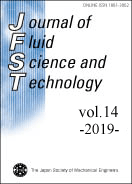
Journal of Fluid Science and Technology
Empowering Engineers with Open Access KnowledgeThe Journal of Fluid Science and Technology, published by the Japan Society of Mechanical Engineers, serves as a pivotal platform for the dissemination of cutting-edge research in the fields of fluid mechanics and mechanical engineering. With an ISSN of 1880-5558, this Open Access journal has been dedicated to advancing the understanding of fluid flow and transfer processes since its establishment. As of 2023, it holds a significant position with a Q3 quartile ranking in both Fluid Flow and Transfer Processes and Mechanical Engineering categories. Researchers and practitioners are encouraged to explore the journal’s extensive collection of articles, contributing to the body of knowledge that impacts various practical applications in engineering and technology. The journal, which has established a reputation for quality amidst a competitive landscape, further fosters international collaboration and education by providing unrestricted access to its content. For professionals and students alike, the Journal of Fluid Science and Technology represents an invaluable resource for the latest findings and innovations in fluid dynamics and mechanical systems.